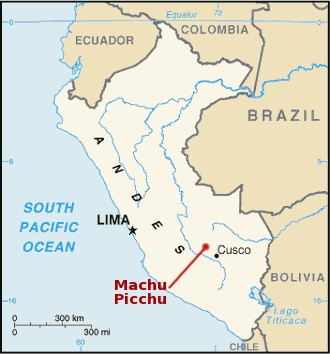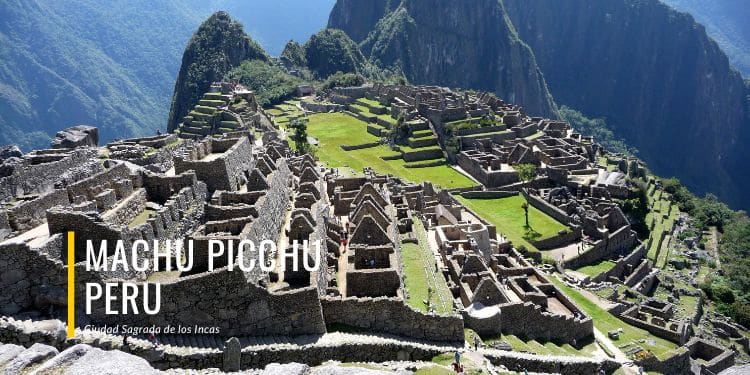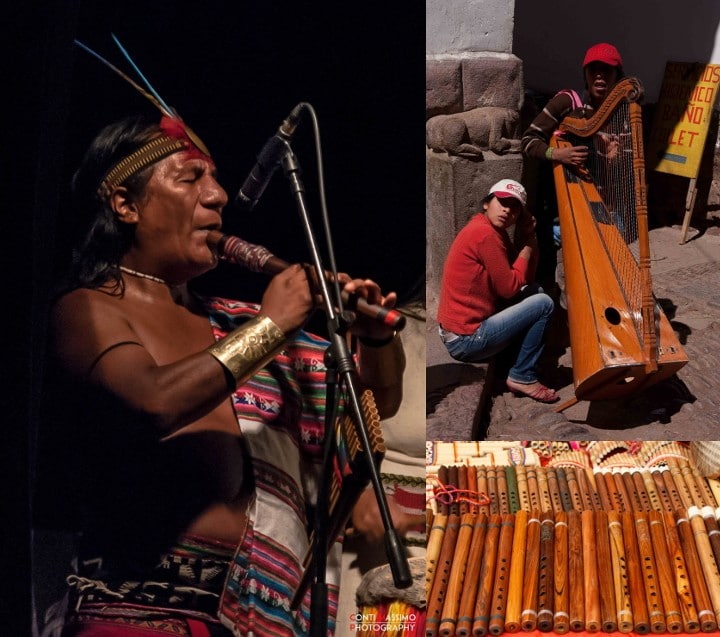Where is Machu Picchu Located?

Machu Picchu, one of the most iconic archaeological sites in the world, is a testament to the ingenuity and architectural brilliance of the Inca civilization. Nestled high in the Andes Mountains, this ancient citadel continues to captivate travelers, historians, and archaeologists alike. But where exactly is Machu Picchu located, and what makes its location so extraordinary? In this article, we explore the geographical and historical significance of Machu Picchu, its stunning surroundings, and its place in the world.
Machu Picchu Location
Machu Picchu is located approximately 120 kilometers (75 miles) northwest of Cusco, Peru, in the Urubamba River Valley. This river, known as the Vilcanota River in this region, winds through the rugged terrain of the Vilcabamba Mountain Range. The citadel sits at an elevation of 2,430 meters (7,970 feet) above sea level, perched on a plateau between two prominent peaks: Machu Picchu Mountain (Old Mountain) and Huayna Picchu (Young Mountain).
The site’s strategic location offers breathtaking views of the surrounding mountains and the Urubamba River below. Its isolation and natural defenses made it an ideal location for the Inca civilization, allowing it to remain hidden from Spanish conquistadors for centuries.
Which Country is Machu Picchu Located In?
Machu Picchu is located in Peru, a country in South America known for its rich history, diverse landscapes, and vibrant culture. Peru is home to numerous archaeological wonders, but Machu Picchu stands out as its most famous and visited destination.
The citadel’s remote location in the Andes Mountains adds to its mystique, making it a bucket-list destination for travelers from around the world. Its preservation and recognition as a UNESCO World Heritage Site have further solidified its status as a global treasure.
Where is Machu Picchu Located on a Map?
On a map, Machu Picchu is situated in the southern part of Peru, within the Cusco Region. It lies in the Sacred Valley of the Incas, a region known for its fertile lands and historical significance. The nearest major city is Cusco, which serves as the gateway for most visitors traveling to Machu Picchu.
To reach Machu Picchu, travelers typically take a train from Cusco to the town of Aguas Calientes (also known as Machu Picchu Pueblo), followed by a short bus ride or hike up to the citadel. The journey itself is an adventure, offering stunning views of the Andean landscape.
Where is Machu Picchu Located in South America?
In the context of South America, Machu Picchu is located in the western part of the continent, within the Andes Mountain Range. This mountain range stretches along the western edge of South America, passing through several countries, including Colombia, Ecuador, Peru, Bolivia, Chile, and Argentina.
Peru’s position in the central Andes makes it a hub of Inca history and culture. Machu Picchu’s location in this region highlights its importance as a spiritual, political, and agricultural center for the Inca Empire.
The Geography of Machu Picchu
Machu Picchu’s location is as remarkable as its architecture. The citadel is built on a narrow ridge between two mountains, surrounded by steep cliffs and lush vegetation. The Urubamba River flows through the canyon below, creating a natural barrier that protected the site from invaders.
The area’s diverse microclimates and fertile soil made it an ideal location for agriculture. The Inca constructed extensive terraces to cultivate crops, ensuring the sustainability of the citadel. Today, these terraces are a testament to the Inca’s advanced engineering and agricultural knowledge.
The Two Zones of Machu Picchu
Machu Picchu is divided into two main zones: the agricultural zone and the urban zone.
- Agricultural Zone: This area features a network of terraces used for farming. The terraces not only provided food for the inhabitants but also helped prevent soil erosion on the steep slopes.
- Urban Zone: This zone is further divided into the sacred sector and the civil sector. The sacred sector includes temples, altars, and ceremonial spaces, while the civil sector comprises residential areas, storage rooms, and workshops.
The Mystery of Machu Picchu
Since its rediscovery in 1911 by American explorer Hiram Bingham, Machu Picchu has been shrouded in mystery. Scholars continue to debate its original purpose, with theories ranging from a royal estate to a religious sanctuary.
The citadel’s precise construction, alignment with astronomical events, and harmonious integration with the natural landscape have led many to believe it held significant spiritual importance for the Inca. Despite ongoing research, many aspects of Machu Picchu’s history remain unknown, adding to its allure.
Conclusion
Machu Picchu’s location in the heart of the Peruvian Andes is as awe-inspiring as the citadel itself. Situated between two towering peaks and surrounded by lush greenery, it is a masterpiece of Inca engineering and a symbol of their deep connection to nature. Whether you’re planning a visit or simply exploring its history, understanding where Machu Picchu is located enhances your appreciation of this ancient wonder.






